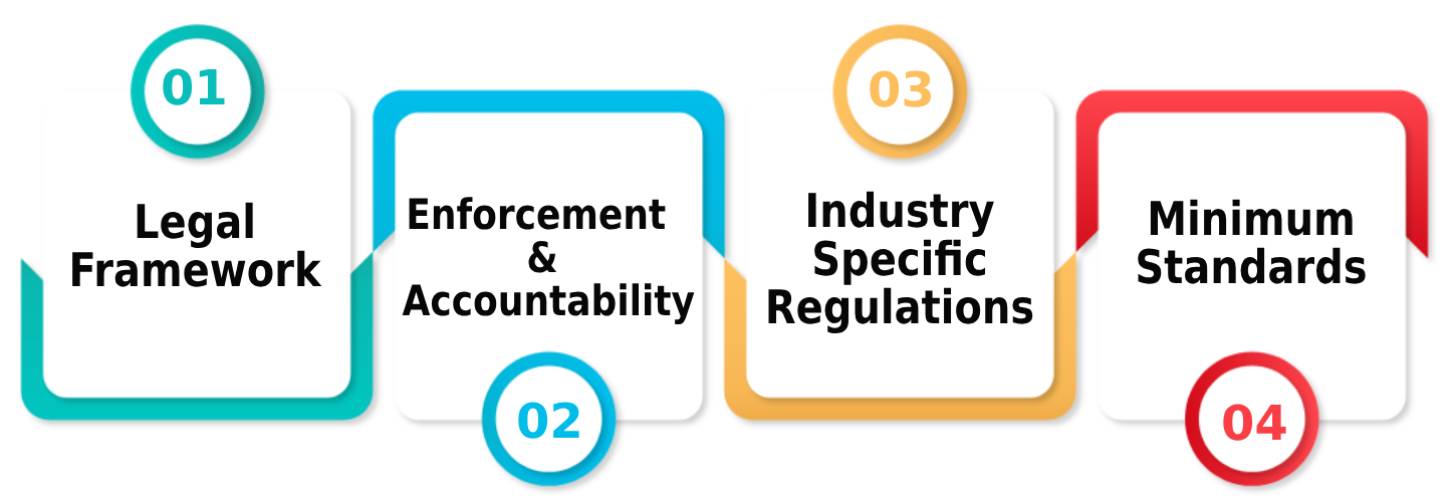The success of any safety programme depends on how the workers imbibe the values of safety into themselves and this task can be achieved only through consistent efforts put forward from the leadership towards maintaining social relationships, communication and worker participation.
It has been often found that organisations put much focus on policing the Act and Regulations for implementing Health & Safety when the essence of safety lies in social and relational tasks.
The question “HSE CULTURE – IS IT A SOCIAL TASK OR REGULATORY AFFAIR?” is a wide topic to ponder.
Indeed, the question of whether HSE (Health, Safety, and Environment) culture is a social task or a regulatory affair is a complex and multifaceted topic. It requires consideration of various perspectives and factors. Let’s explore both sides of the argument:
HSE Culture as a Social Task:
From this viewpoint, HSE culture is primarily seen as a social task influenced by human behavior, attitudes, and values. The emphasis is placed on creating a safety-conscious environment through individual and collective actions.
Here are some points supporting this perspective:

a. Shared Responsibility: HSE culture involves creating a collective responsibility for safety within an organization or community. It requires engaging employees or members at all levels, encouraging them to take ownership of safety practices.
b. Behavioral Change: Developing a strong safety culture necessitates influencing people’s behavior and attitudes towards safety. This can be achieved through awareness campaigns, training programs, and fostering a sense of accountability among individuals.
c. Positive Peer Influence: A robust HSE culture often relies on the power of social influence. When individuals observe their peers adhering to safety protocols and practices, it can lead to positive behavior change and encourage a safer work or social environment.
d. Continuous Improvement: Socially driven HSE culture focuses on continuous improvement and learning from incidents. Encouraging open communication, reporting near misses, and implementing feedback loops are essential elements of this approach.
HSE Culture as a Regulatory Affair:

Alternatively, HSE culture can be viewed as a regulatory affair, with an emphasis on compliance with legal requirements and standards. This perspective highlights the role of regulations and external enforcement mechanisms.
Consider the following points:
a. Legal Framework: Governments and regulatory bodies establish laws, regulations, and standards to ensure safety and protect individuals, communities, and the environment. Compliance with these regulations is essential to maintain a safe working or living environment.
b. Enforcement and Accountability: Regulatory agencies play a vital role in monitoring compliance and enforcing safety standards. By conducting inspections, audits, and investigations, they hold organizations accountable for maintaining a safe environment.
c. Industry-Specific Regulations: Certain industries, such as nuclear power or chemical manufacturing, have stringent regulations due to their inherent risks. In these cases, regulatory compliance is crucial to prevent accidents and protect public safety.
d. Minimum Standards: Regulatory frameworks often define minimum safety requirements, ensuring a baseline level of protection for individuals and communities. They provide a consistent framework for organizations to follow.
It’s important to note that HSE culture is not an either-or scenario; rather, it involves a combination of both social tasks and regulatory affairs. While fostering a strong safety culture is primarily a social task, regulations and legal frameworks provide a foundation and guidelines for organizations to adhere to. Ideally, a successful HSE culture integrates both approaches, combining individual responsibility, positive social influence, and regulatory compliance to achieve the highest level of safety and well-being.
Absolutely! Integrating individual responsibility, positive social influence, and regulatory compliance is key to building a successful HSE culture. Let’s delve deeper into each of these approaches:
- Individual responsibility:Individual responsibility: Each employee should understand their personal responsibility for their own safety and the safety of others. This includes following safety procedures, using personal protective equipment (PPE), and reporting hazards or near misses promptly. Encourage employees to take ownership of their actions and decisions regarding safety.
- Positive social influence:Social influence plays a crucial role in shaping behavior and promoting safety. Foster a positive work environment where employees support and encourage each other to prioritize safety. Recognize and celebrate employees who actively demonstrate safe behaviors and engage in safety initiatives. Encourage peer-to-peer feedback and communication about safety concerns.
- Regulatory compliance: Compliance with health, safety, and environmental regulations is essential for creating a safe and healthy workplace. Ensure that all employees are aware of relevant regulations and standards and provide training to help them understand and adhere to these requirements. Regularly assess and audit the organization’s compliance with regulations, making necessary improvements and adjustments as needed.
By integrating these approaches, you can create a culture where individuals take responsibility for safety, positive social influence reinforces safe behaviors, and regulatory compliance provides a baseline for safety standards. This multi-faceted approach fosters a strong HSE culture that promotes the highest level of safety and well-being for everyone in the organization.
Contact Us
Kindly call our Experts @ +91 8121563728 / +91 8015527650 or mail us @ kalyan.r@greenworldsafety.com / indumanasa.m@greenwgroup.com
Get Your Query Answered / Get Expert Assistance To Choose the Right Course for You Or Your Associates






